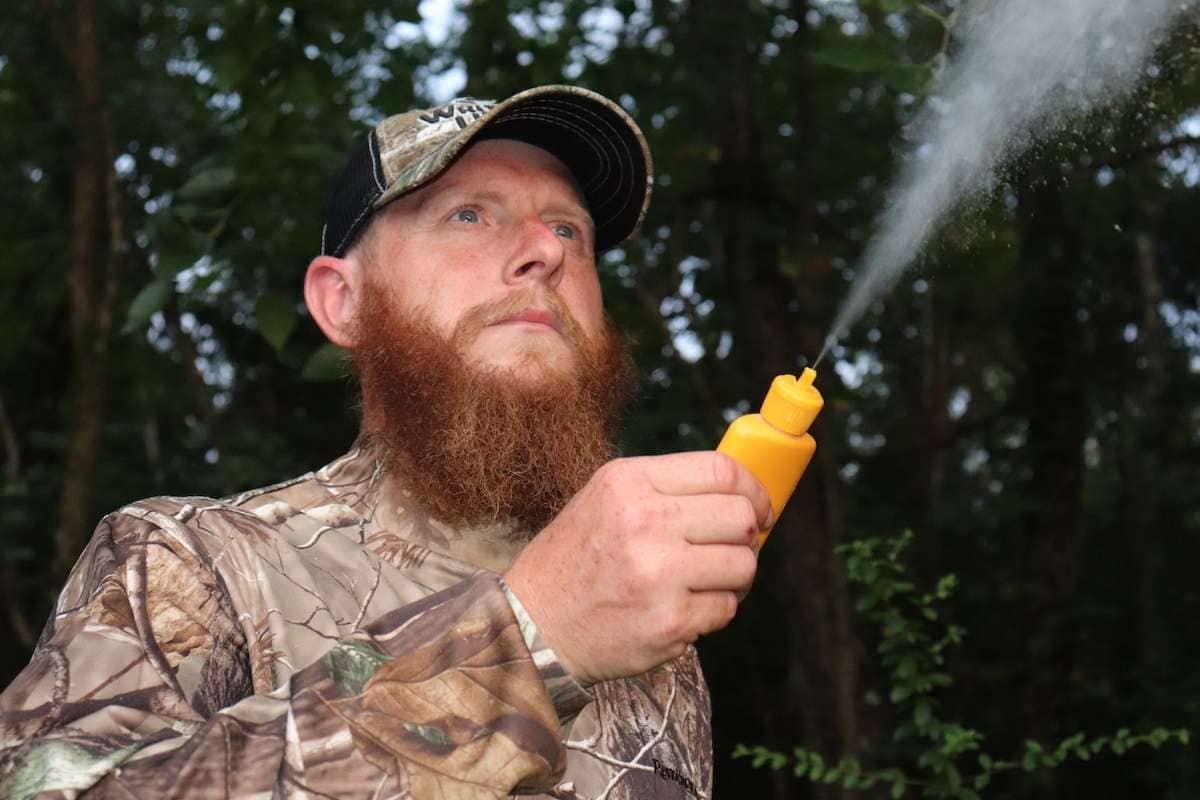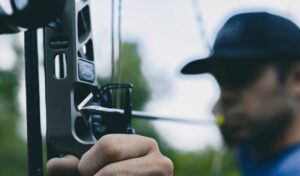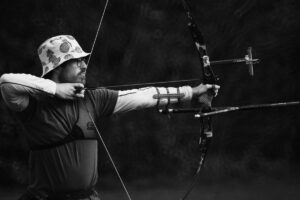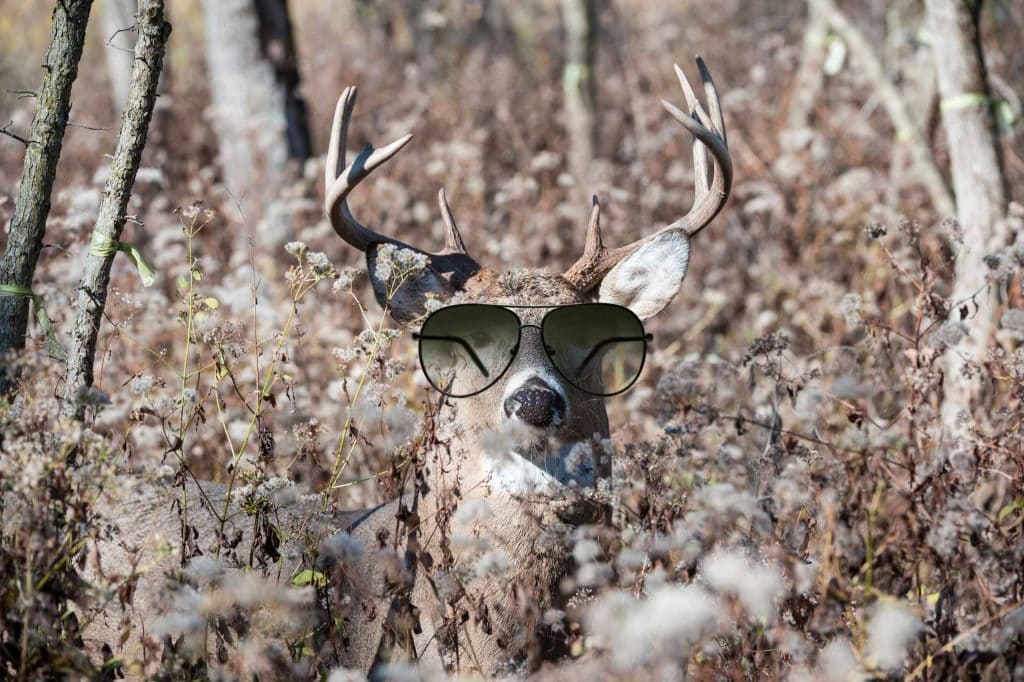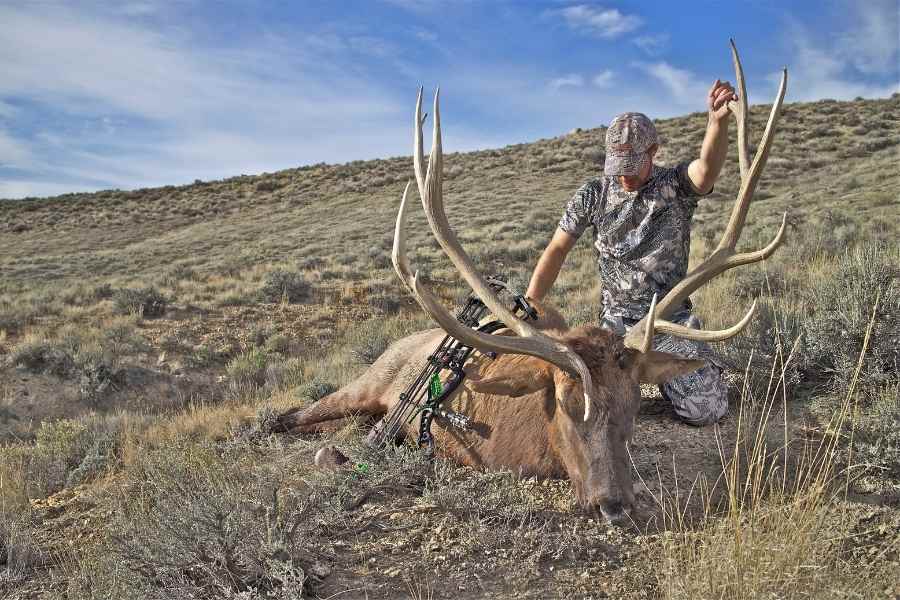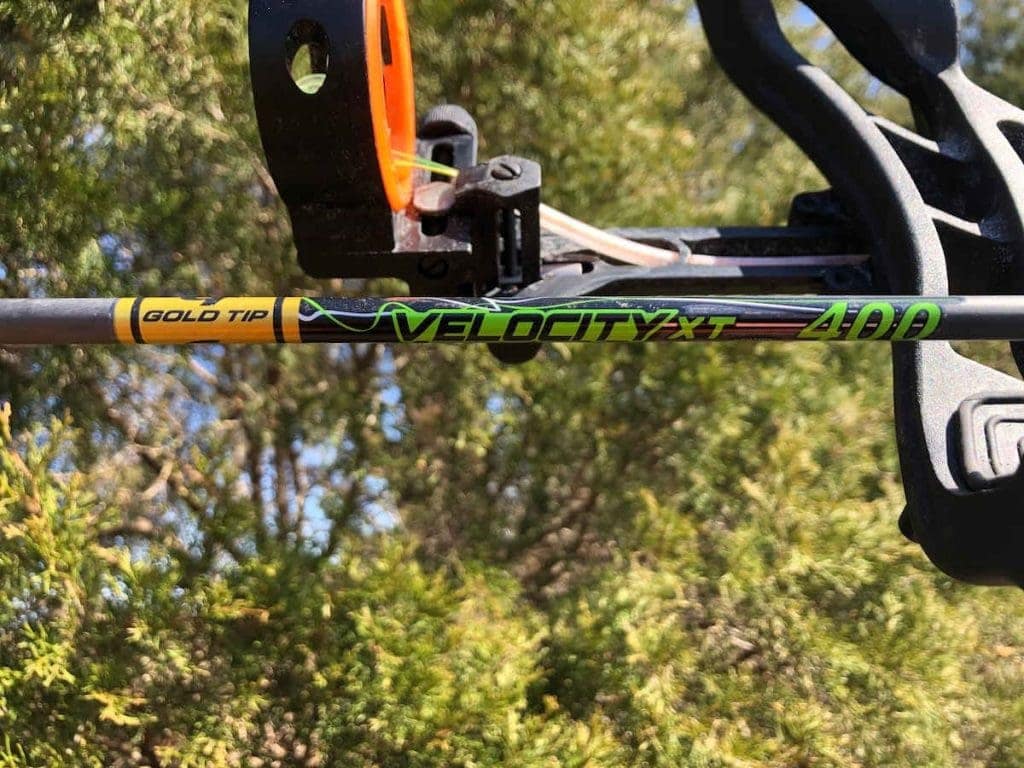As a hunter, I know all too-well how keen a whitetail’s sense of smell is. They use this strength to their advantage to detect any danger that may lurk within proximity.
Deer use this strength to their advantage when attempting to detect the presence of danger at a distance. The average whitetail deer can detect human odor or the odor of other predators at distances of up to ¼-mile under ideal circumstances.
However, it is also worth mentioning that a deer’s sense of smell can be impaired whenever the wind direction is less than optimal.
Deer are pretty adept at avoiding such scenarios whenever possible in a bid to mitigate any unnecessary danger. Yet, many hunters still question whether deer will walk with or against the wind and to what extent.
It is important to understand that deer are highly sensitive to their environment, and the wind is no exception.
Contents (Jump to Topic)
ToggleThe Truth About Whitetails And Wind
Most deer will attempt to take full advantage of the prevailing wind direction whenever possible. This means most whitetails will walk into an oncoming headwind, assuming the situation permits.
read.. how to choose the best hunting binoculars
At the very least, most deer will attempt to direct their travels at an angle that casts the prevailing wind to them head-on.
One seldom witnesses a deer traveling extensively with the wind at its back. This is because a deer’s sense of smell is significantly hampered while traveling, as less scent is detected directly by the nose.
Bucks also rely upon favoring wind currents to assist in scent-checking does during the pre-rut and rut.
By circling downwind of food sources and popular bedding areas, bucks can check for the first hints of estrous without individual scent-checking each particular doe.
Generally speaking, deer rely more on wind currents and thermals for security as they mature.
That being said, one might notice that older maternal does and bucks of a higher age class tend to mind the wind much more regularly when choosing a path of travel.
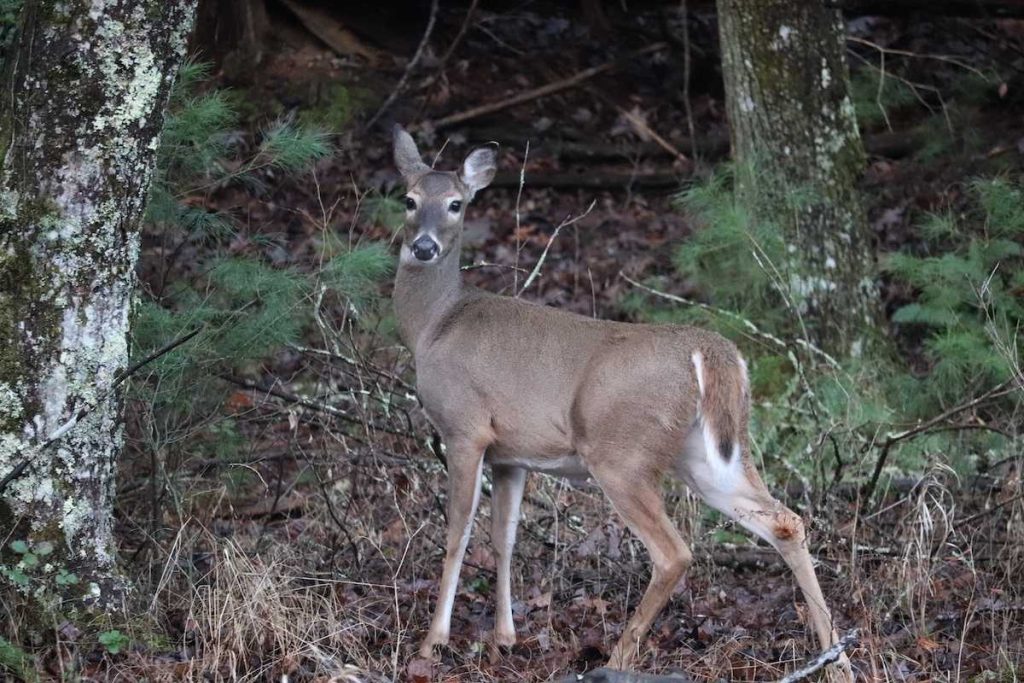
When Exceptions Apply
As with any rule or generalized consensus, some exceptions apply to the rule above; perhaps most readily observed is that deer of a younger age class do not always base their travel patterns as heavily upon the prevailing wind direction.
Deer only tend to wisen up with age, taking fewer gambles with each passing year, thereby naturally making younger members of the herd more susceptible to danger.
This is easily illustrated when watching as deer filter into a food plot. Younger deer often enter wherever easy access is granted, while more mature whitetails typically circle downwind before stepping into the open.
Of course, the latter example represents deer more focused on avoiding danger whenever possible.
Additionally, deer of every age class seem to pay less attention to the prevailing wind direction when traveling through low-pressure areas, where they face little chance of human interaction or threat of danger.
Simply put, when deer are not on edge, they occasionally let their guard down, if only to a minor extent.
Putting A Plan Into Motion
Hunters, keen on the information above, can use such knowledge to their advantage. This is done primarily through thoughtful stand placement.
Knowing that most deer will vary their travel route depending upon the prevailing wind direction, a hunter can hang stands to align with anticipated movements for the most common wind direction in a given area.
If the dominant wind direction within the vicinity of a food plot tends to dictate the point at which deer enter a field, you can position a stand along the route deer use when circling downwind to this common point of entry.
This allows you to intercept deer as they move with the wind at their face. However, hanging a backup stand suitable for use on days when the wind is blowing from an opposing direction is also important.
During the rut, you can use this information to leverage their chance at a shot opportunity. Knowing that bucks will be scent-checking doe bedding areas, it stands to reason that the highest area of buck movement will be along trails downwind of such sites.
This can be an especially deadly tactic when attempting to hunt mature whitetails during this period.
Penn State University had a study on how deer respond differently when there is wind and rain together.
“Deer respond differently when there is wind and rain together rather than just wind or just rain. Rain alone causes a decrease in buck movement. But a little rain has no effect on buck activity if there is a strong wind blowing. Strong winds will increase buck movement no matter what!“
Source: https://www.deer.psu.edu/blown-away/
The Wind Equation
While knowing how deer react to various winds will not guarantee a punched tag, referencing such information when determining how best to hunt a specific area is undoubtedly a worthy start.
Even more importantly, one must remember that a whitetail’s nose is its first defense against danger and is not easily beaten, regardless of your course of action.
Best Wind Direction for Deer Hunting
As an avid deer hunter, you know that understanding and utilizing the wind is crucial to your success. You’ve likely spent countless hours scouting for the perfect hunting spot, only to be frustrated when the wind seemingly betrays you.
However, you can turn the wind into your greatest ally with the right knowledge and approach.
Wind direction plays a significant role in a deer’s movement patterns, as they rely heavily on their keen sense of smell to detect potential threats. Knowing how to position yourself in relation to the wind can make all the difference in your hunting experience.
The science behind deer scent detection provides tips on which wind directions are most favorable for hunting and offers practical advice on using this information to your advantage.
When bagging that trophy buck, it’s crucial to consider how the breeze can make or break your chances. Mature bucks have an incredible sense of smell, and if they catch a whiff of human scent, they’re likely to stay well away from your hunting area.
To maximize your chances of success, you’ll want to pay attention to wind direction and adjust your hunting strategy accordingly.
A steady wind can help carry your scent away from where you expect whitetail movement, making it easier to remain undetected.
One way to keep track of the current wind direction is to use a wind indicator, which can be as simple as a piece of lightweight fabric or a small bottle of powder that you can release into the air.
During hunting seasons, it’s essential to check the wind direction frequently throughout the day, as it can shift and change without much warning.
Windy conditions can also impact deer movement, making them more cautious and less likely to travel far from their bedding areas. By staying aware of the changing wind patterns, you’ll be better prepared to adapt your hunting strategy on the fly.
Generally, positioning yourself downwind of where you expect deer to be is the best approach. This means the wind blows your scent away from the deer rather than towards them.
However, it’s also important to remember that deer are unpredictable creatures and can sometimes move unexpectedly.
You’ll greatly improve your chances of a successful hunt by continually monitoring the wind direction and adjusting your position as needed.
Ultimately, paying close attention to wind direction is a key skill every deer hunter should develop to increase their odds of bagging that prized buck.
Outsmarting a whitetail’s keen sense of smell by strategically positioning yourself in the woods can truly elevate your hunting game.
As deer hunters, you need to be aware of weather conditions, wind speeds, and deer movements to ensure your scent doesn’t betray your presence.
One helpful tool to gauge the wind direction is using a milkweed seed; watching how it drifts in the air can clearly indicate how the wind is blowing.
It’s best to hunt with a gentle wind in your face, as this prevents your scent from drifting towards the deer.
When choosing your hunting location, consider the area’s terrain features and hunting pressure.
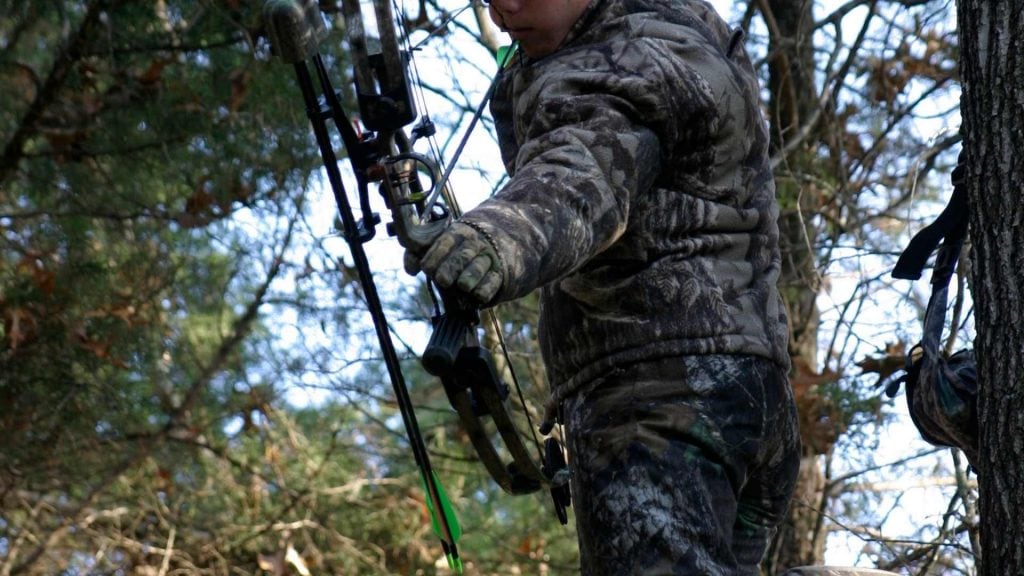
Look for natural funnels, pinch points where deer are more likely to pass through, and bedding areas and food sources.
By understanding the deer’s patterns, you can position yourself downwind from these high-traffic areas, making it more difficult for the deer to detect your scent.
Additionally, employing scent control tactics, such as using odor-eliminating sprays, can further reduce the chance of deer detecting your presence.
As you become more experienced with playing the wind, you’ll begin to notice how certain wind speeds and directions impact deer movements.
Remember that deer are more likely to be active during gentle winds, as this gives them a sense of security due to their heightened sense of smell.
By continually adapting your hunting strategy and adjusting your position based on the wind, you’ll have a better chance of outsmarting the whitetail deer and increasing your success in the field.
Mastering playing the wind is crucial for a successful deer hunting experience.
Remember, paying attention to wind direction and adjusting your hunting strategy accordingly will give you an edge over the whitetails.
So, get out there and use these tips to your advantage. As an experienced hunter, you know it’s all about adapting to the environment and staying ahead of your quarry.
Before you go..
Understanding how deer react to different winds can help hunters place themselves in the best position to take a shot.
Knowing that deer will vary their travel route depending upon the prevailing wind direction, a hunter can place stands to align with anticipated movements for the most common wind direction in a given area.
If the dominant wind direction within the vicinity of a food plot tends to dictate the point at which deer enter a field, you can position a stand along the route deer use when circling downwind to this common point of entry.
